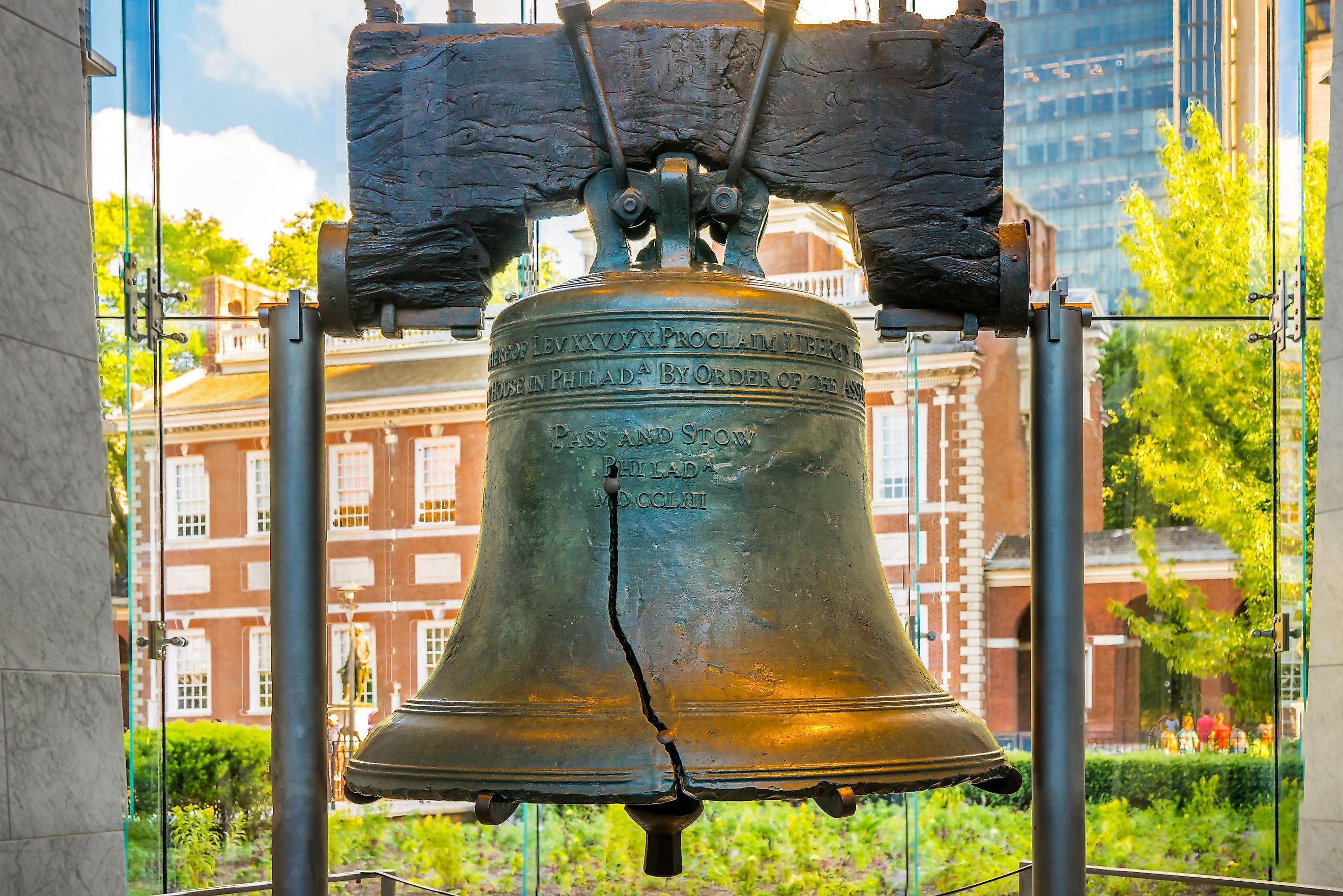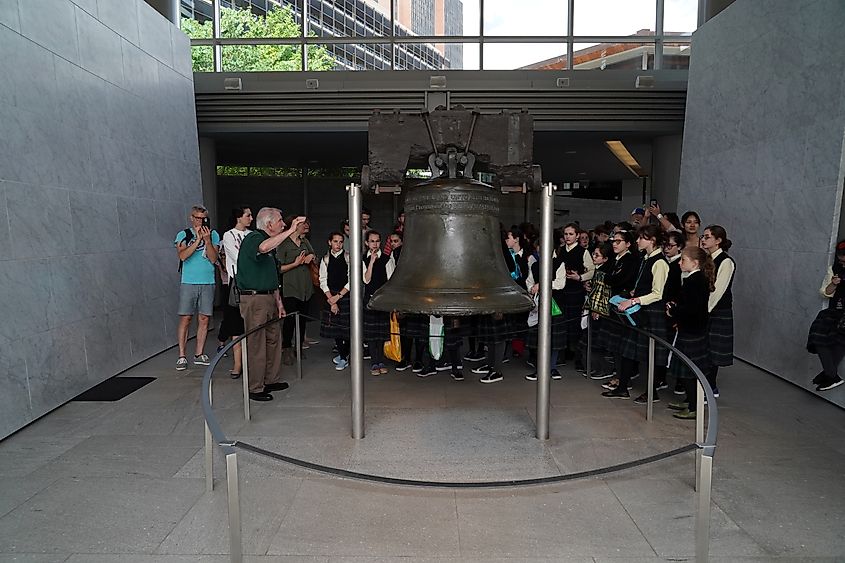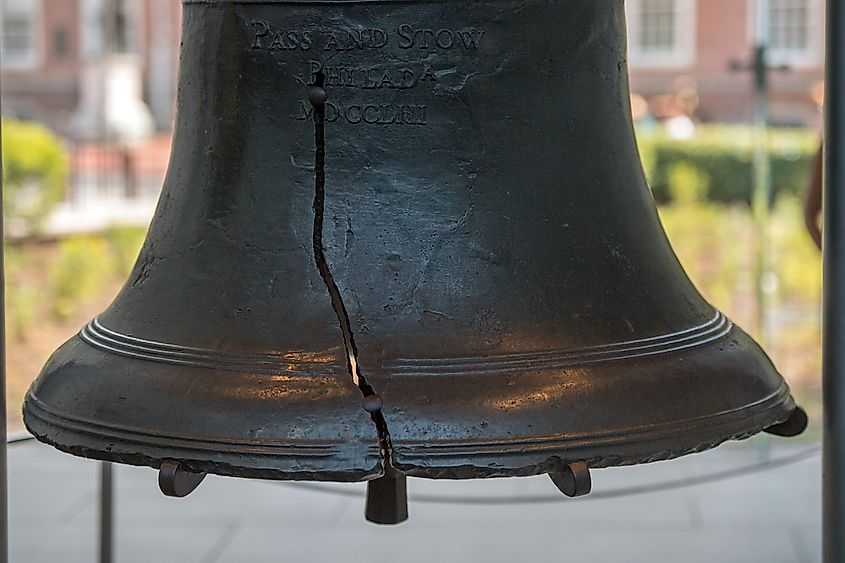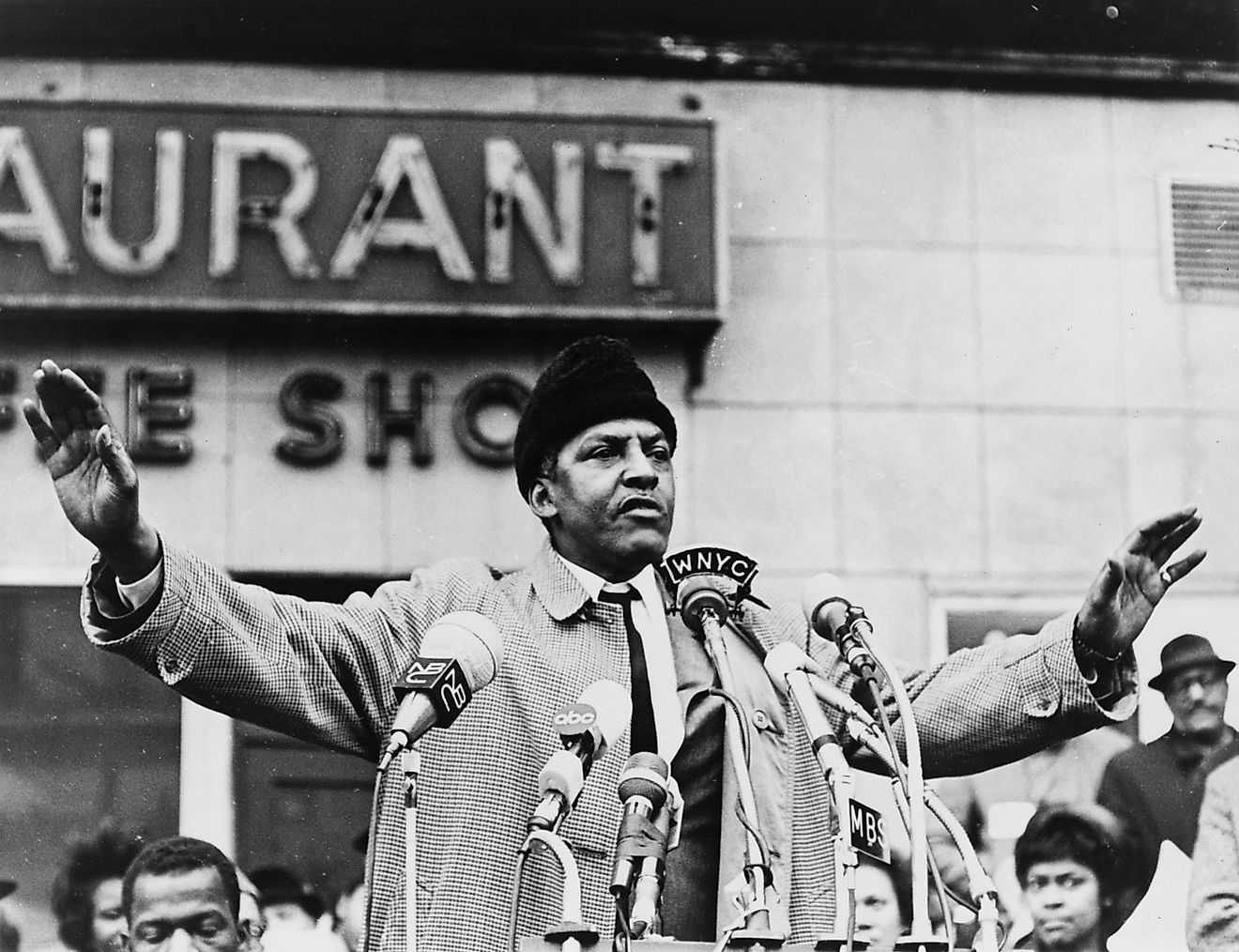
The History Behind the Liberty Bell: How It Became a Symbol of Freedom
In a busy city filled with history and progress, the Liberty Bell stands as a lasting symbol. This iconic bell has captured the hearts of many Americans and tourists. Beneath its cracked surface is a rich history and significance, making it an emblem of liberty and justice. For history buffs, American patriots, and schools, the story of the Liberty Bell is captivating. Its transformation from a simple bell to a national symbol of freedom reflects the larger story of the nation. Let's dive into the interesting history of the Liberty Bell and find out how it represents the ideals of freedom and justice that resonate with the American spirit.
The Birth of a Bell

Phildelphia, PA - Visitors at Liberty Bell symbol of usa freedom. Editorial credit: Andrea Izzotti / Shutterstock.com
The Liberty Bell was created in 1752 at the Whitechapel Bell Foundry in London. It was commissioned by the Pennsylvania Provincial Assembly for the Pennsylvania State House, now known as Independence Hall. Made from a mix of metals, including copper, tin, and lead, it was designed to produce a unique, resonant sound. However, when it arrived in Philadelphia, it cracked during its first ringing. Not giving up, local founders John Pass and Charles Stow recast the bell twice in 1753, adding 8% silver to improve the sound. This newly recast bell became the nation's voice during important events, including the reading of the Declaration of Independence in 1776, solidifying its status as an iconic symbol of freedom and democracy.
The Revolutionary Toll
As tensions grew in the American colonies, the Liberty Bell gained a deeper meaning beyond its initial purpose. In 1776, it rang to announce the signing of the Declaration of Independence, marking a key moment in the fight for freedom. Its ringing became a symbol of revolutionary spirit, inspiring patriots to come together against oppression. The bell's sound represented hope and defiance, acting as a rallying cry for liberty that crossed regional lines. During the War of Independence, it often rang to celebrate important victories and events, creating a strong link between the bell and democratic ideals. Even as cracks began to form, they reflected the struggles of a nation trying to find its identity. The Liberty Bell became a treasured symbol, representing the spirit of a time driven by the dreams of freedom and the pursuit of justice.
The Inscription That Set the Tone

The Liberty Bell features the strong inscription: "Proclaim LIBERTY Throughout all the Land unto all the Inhabitants thereof Lev. XXV. v. 10." This meaningful message from the Bible captures the essence of freedom and equality that the bell represents. Originally meant to encourage civic duty, the inscription has evolved, resonating throughout American history. It became a rallying cry during the American Revolution, reflecting the colonists' desire for independence and their struggle against tyranny. Over the years, various social movements have adopted the bell's message, advocating for civil rights and freedom for all. This blend of historical importance and lasting legacy has turned the Liberty Bell into an iconic symbol of freedom, inspiring generations in their quest for justice and equality.
The Bell's Journey Through Time
The Liberty Bell has evolved far beyond its original function as a mere symbol of liberty. After the Revolutionary War, it emerged as a cherished emblem of American values, linking itself to pivotal moments and movements in history. Notably, the bell made appearances at major events such as the 1876 Centennial Exposition in Philadelphia, celebrating America's 100th birthday, and was even paraded through cities like New York and Washington, D.C. In 1846, the bell developed a significant crack, leading to its final retirement from ringing. Despite this, it has continued to captivate visitors with its powerful symbolism. Today, it resides in the Liberty Bell Center at Independence National Historical Park in Philadelphia, where it stands as a profound symbol of freedom and inspiration, connecting past and present with its enduring legacy.
The Crack That Couldn't Be Silenced

The most notable feature of the Liberty Bell is its crack, which symbolizes resilience. This crack appeared soon after the bell's arrival and was initially viewed as a flaw, marking its imperfect journey. The fissure remained despite many attempts to fix it. Instead of reducing its importance, the crack has come to symbolize the ongoing struggle for freedom and justice in tough times. Over the years, it has prompted many to think about the complexities of liberty and the fight for equality. Today, the Liberty Bell's crack is a physical reminder of its history and a symbol of the country's ongoing quest for true independence.
The Bell in the Abolitionist Movement
The Liberty Bell became a symbol for the abolitionist movement in the years leading up to the Civil War. Activists and reformers saw the bell’s strong inscription as a call for freedom, connecting it to their fight against slavery in the United States. During this time, the Liberty Bell traveled to various abolitionist gatherings, where it was displayed and rung as a sign of the struggle for equality and human rights. Its link to liberty inspired many to join the cause, fueling passion for the movement. The noticeable crack in the bell reflected the societal divisions of the era, reminding everyone that the path to true liberty was filled with challenges requiring steadfast determination and commitment.
The Centennial Celebration

In 1876, the United States celebrated its 100th anniversary of independence, with the Liberty Bell at the center of the festivities. Displayed at the Centennial Exposition in Philadelphia, the bell drew thousands of visitors who admired its historic importance. The celebration highlighted the nation's journey toward liberty and justice; the bell's inscription reflected these themes. It rang across the fairgrounds, symbolizing unity and the ongoing pursuit of equality. This moment reaffirmed the Liberty Bell's significance in American history and strengthened its legacy as a powerful symbol of freedom that inspires generations to fight for their rights.
The Bell's Nationwide Tour
After the Centennial Celebration, the Liberty Bell went on a nationwide tour, solidifying its place as an iconic American symbol. Starting in 1915, the Bell visited cities like Chicago, New York, and San Francisco to promote unity and patriotism. Each stop allowed communities to come together and reflect on the values of freedom and democracy it stood for. As the bell traveled, it sparked local pride and inspired events like speeches and parades. This tour strengthened the Liberty Bell's legacy. It helped renew national identity during social change, reminding people of their shared history and the ongoing pursuit of liberty and justice.
Echoes of Freedom
The Liberty Bell symbolizes freedom, justice, and the ongoing fight for equality in America. It’s important to recognize its various roles in history, from calling for independence to serving as a rallying point for the abolitionist movement. Today, it inspires many visitors and reminds them of the core principles that shape our nation. The discussions it prompts about liberty, unity, and justice are essential, encouraging each generation to consider and uphold these values. By learning about the bell’s history and supporting efforts that promote its legacy, we help keep the pursuit of liberty and justice alive in the hearts and minds of future Americans.







